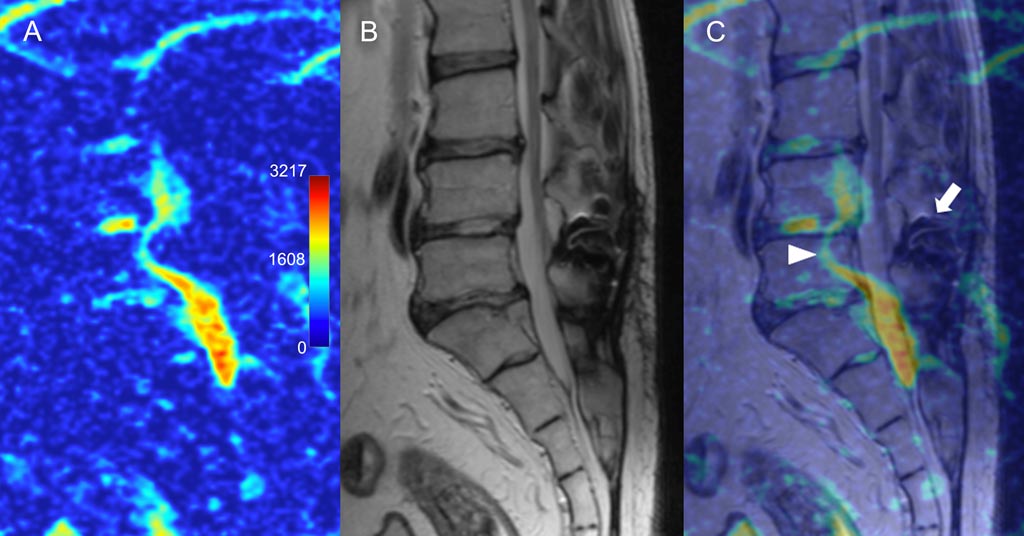Novel Imaging Technique Predicts Spinal Degeneration
By MedImaging International staff writers
Posted on 31 Oct 2017
A new magnetic resonance imaging (MRI) technique uses apparent diffusion coefficient (ADC) maps to assess water dynamics in the intervertebral disk and other spinal structures.Posted on 31 Oct 2017
Researchers at Irkutsk State Medical University (IRKSMU; Irkutsk, Russia) and St. Joseph’s Hospital and Medical Center (Phoenix, AZ, USA) conducted a study involving 100 consecutive patients admitted to the spinal surgery service in order to evaluate the utility of ADC maps generated from diffusion weighted (DWI) MRI in the assessment of patients with advanced degenerative lumbar spine disease. ADC values and characteristic maps were assessed in the regions of interest over different degenerative lumbar spinal pathologies. In all, the study included 452 lumbar vertebral segments.

Image: Sagittal ADC map (A), corresponding T2 MRI (B), and colored overlay showing distortion of the signal (C) (Photo courtesy of IRKSMU).
ADC map features were identified for protrusion, extrusion, and sequester types of lumbar disk herniation; spondylolisthesis; reactive Modic endplate changes; Pfirrmann grade of intervertebral disc degeneration; and compromised spinal nerves. The results showed compromised nerve roots had significantly higher mean ADC values than adjacent contralateral nerve roots. Compared to normal bone marrow, Modic I changes showed higher ADC values and Modic 2 changes showed lower ADC values, respectively. And ADC values correlated with Pfirrmann grading, but differed from herniated and non-herniated disks of matched Pfirrmann 3 and 4 grades. The study was published on August 28, 2017, in PLOS One.
“We're improving our understanding of one of the most common maladies to affect humans, which is spinal disc degeneration,” said study author Mark Preul, PhD, of the St. Joseph’s Barrow Neurological Institute. “Imaging technology such as MRI ADC mapping will provide much greater and improved information to the physician treating patients with degenerated disc and other degenerative spine conditions.”
“The imaging findings are being compared with the histology and biomarkers of disk degeneration that will eventually help to recognize and predict the disease earlier, and help to choose the best treatment option for each patient,” concluded lead author Evgenii Belykh, PhD, of IRKSMU. “The research initiative will image larger numbers of patients to confirm and investigate further applications for ADC mapping in the spine.”
MRI is widely used for imaging evaluation of patients with low back pain. T1 and T2-weighted MRI sequences provide anatomical information regarding the soft tissues, including fat and water content, and are usually used for the assessment of the lumbar discovertebral complex, focusing on structural changes in the intervertebral disk and zygapophyseal joints, reactive vertebral bone marrow changes, location and extent of the disk material displacement, degree of the stenosis, and location and extent of nerve root compression.
Related Links:
Irkutsk State Medical University
St. Joseph’s Hospital and Medical Center













